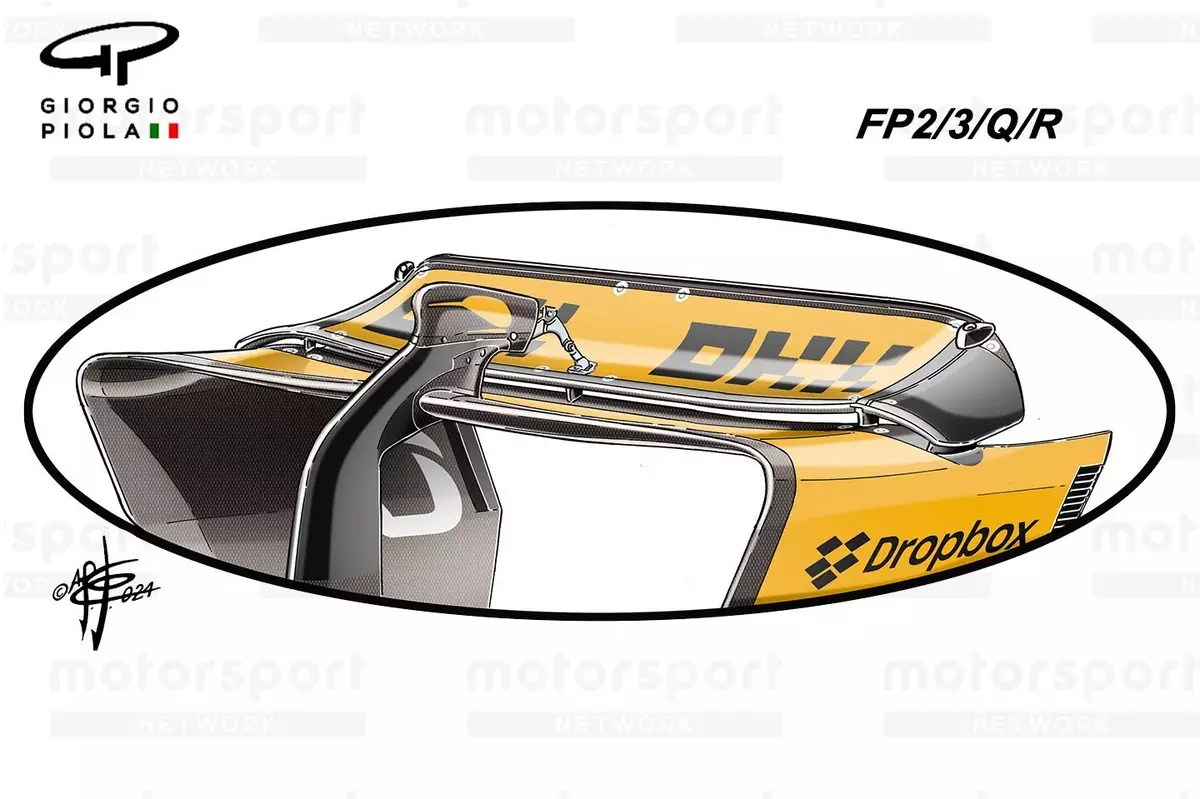Strategic Engineering Choices: McLaren’s Rear Wing Evolution for the Las Vegas Grand Prix
Entering the world of Formula 1 racing, you quickly learn that the art of engineering is as much about strategy as it is about speed. With each race, teams like McLaren meticulously craft and recalibrate their designs to gain the slightest edge over competitors. As the Las Vegas Grand Prix approached, McLaren’s rear wing evolution became a focal point, highlighting how crucial strategic engineering decisions can be in shaping race outcomes. It’s fascinating to see how these innovations unfold, especially when it’s all about fractions of a second making all the difference.
I recall my own experiences watching races, feeling the tension build as cars zipped past in a blur. The thrill isn’t just in the race itself but also in knowing the depth of thought behind every component on those cars. McLaren’s journey with their rear wing design for the Las Vegas Grand Prix was no exception. Their approach wasn’t just about compliance with regulations; it was an exercise in innovation and adaptability, which is something that resonates deeply with anyone who appreciates both creativity and precision.
When McLaren debuted their new rear wing design at the Las Vegas Grand Prix, it was a testament to their forward-thinking mindset. The introduction of their ‘mini-DRS’ concept during the summer break was daring and revolutionary. This design managed to push the boundaries while still adhering to FIA regulations, showcasing McLaren’s commitment to maximizing aerodynamic efficiency. It was this very ingenuity that played a significant role in Oscar Piastri’s victory at the Azerbaijan Grand Prix.
Key Takeaways
- McLaren’s innovative ‘mini-DRS’ concept demonstrated significant aerodynamic advantages.
- The FIA’s scrutiny led to strategic shifts in McLaren’s rear wing design for Las Vegas.
- Balancing regulation compliance with performance is crucial in Formula 1 racing.
The Rise and Fall of the ‘Mini-DRS’
The excitement surrounding McLaren’s ‘mini-DRS’ solution quickly turned into a challenge when rival teams raised concerns, prompting an investigation by the FIA. As a result, McLaren had to pivot away from this innovative design for the Las Vegas circuit. The track’s long straightaways would have been ideal for harnessing their previous design’s capabilities. However, with regulatory compliance taking precedence, McLaren opted for a more conventional lower downforce wing option that had already proven its worth earlier in the season.

This alternative design had previously graced Lando Norris’s car during the Italian Grand Prix. It was familiar territory but required some adjustments to fit within the current regulatory constraints while maintaining performance levels. The mainplane of this wing was flatter compared to modern sculpted forms, necessitating further structural modifications to ensure stability and efficiency under race conditions.
Adapting to New Challenges
One notable change in this adaptation involved repositioning the leading edge further back than usual, which required a pronounced lean on the central support pillar for structural integrity. Moreover, transforming tip sections of the wing into triangular shapes replaced standard squared-off structures, reflecting McLaren’s attention to detail in optimizing aerodynamics within regulatory limits. These seemingly minor adjustments were crucial in maintaining competitive performance on such a demanding circuit.
Not content with merely adjusting their rear wing, McLaren also introduced a new front wing design for Las Vegas. This design had been glimpsed during practice at the Italian Grand Prix but underwent further refinements tailored for the unique demands of this particular race. Crescent-shaped cutouts on the upper flap’s trailing edge were engineered specifically to modulate downforce levels effectively.
Balancing Act: Front and Rear Dynamics
The increased size of these cutouts played a critical role in balancing car dynamics amid strategic adjustments at the rear. Achieving this balance isn’t just about numbers; it requires an intuitive understanding of airflow and pressure around the vehicle—a complex yet fascinating aspect of Formula 1 engineering. Modifications extended beyond mere aesthetics; they were pivotal in fine-tuning how air interacted with different parts of the car.

The upper flap’s outer portion also saw changes with a metal support bracket removed to allow freer movement and improved airflow interaction—small changes on paper but potentially game-changing on track. In high-speed environments like Las Vegas, every tweak counts toward optimizing overall car performance.
Final Thoughts
McLaren’s engineering decisions at the Las Vegas Grand Prix underscore just how dynamic and rapidly evolving Formula 1 racing can be. The interplay between staying compliant with regulations while maximizing competitive performance is an ongoing dance teams must master. It’s not just about racing against time on tracks but also keeping pace with relentless engineering innovation off them.
Every modification, aerodynamic tweak, and design evolution showcases McLaren’s dedication to pushing boundaries while staying true to performance goals within given constraints. These choices could very well lay groundwork for future successes—a testament to their commitment not just to winning races but redefining what’s possible within Formula 1 engineering standards.
Formula 1
McLaren
Las Vegas Grand Prix
aerodynamics


Leave a Reply